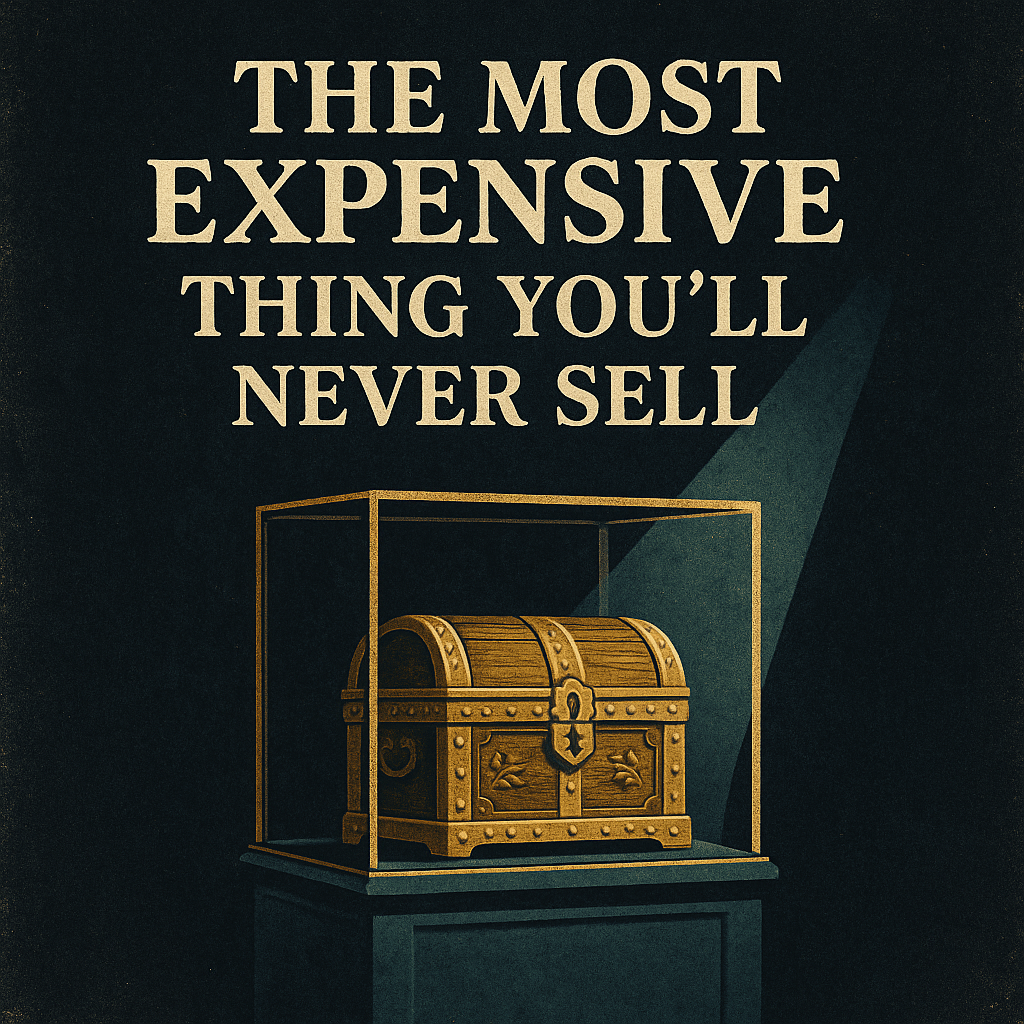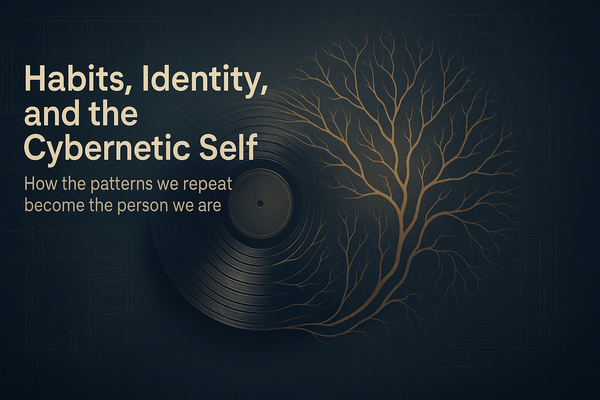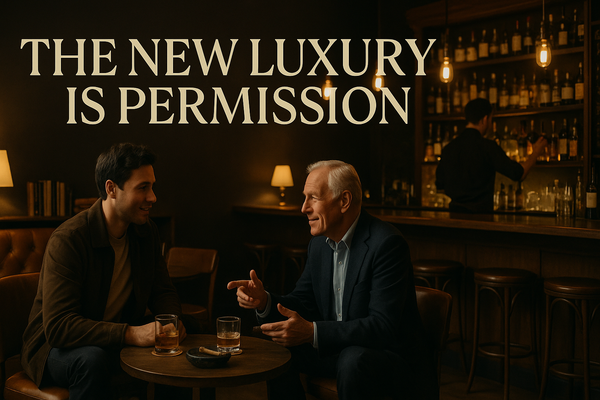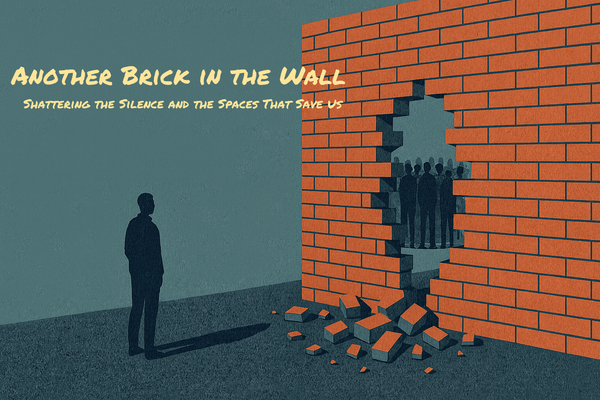The Most Expensive Thing You'll Never Sell
This is the most expensive thing you'll never see on a balance sheet: the moment someone decides you don't understand them or their world. The most expensive mistake you can make is failing to recognize the person in front of you as the hero of their own story.

"You never get a second chance to make a first impression, but you get infinite chances to misunderstand what impression you should be making in the first place."
The $30,000 Mistake
A Fortune 500 CEO once showed up to tour a manufacturing plant wearing his finest Italian suit. The factory workers took one look at him and immediately shut down. Not openly: they were polite, professional, and answered his questions. But the real conversation stopped. They saw him as another executive who didn't understand their world, and he spent the entire visit wondering why no one would give him straight answers about the problems he'd come to solve.
The suit cost $30,000. The missed opportunity to connect with 200 employees who had the solutions he needed? Immeasurable.
This is the most expensive thing you'll never see on a balance sheet: the moment someone decides you don't understand them or their world.
This applies whether you're a hotel greeting guests, a consultant meeting clients, or a job candidate walking into an interview. The principle remains the same: the most expensive mistake you can make is failing to recognize the person in front of you as the hero of their own story.
The Universal Human Truth
"I've learned that people will forget what you said, people will forget what you did, but people will never forget how you made them feel." ― Maya Angelou
At its core, every first impression answers a fundamental question that every human being carries: "Do I matter here? Am I seen and valued for who I actually am?"
This is why art moves us so deeply. Great art reflects something true about our inner experience back to us, making us feel recognized at a level beyond words. The same principle governs every human interaction. When someone's first impression communicates "I see you, I understand your world, and I value what matters to you," they don't just feel satisfied: they feel recognized as a full human being.
The Hero Principle
"Treat a man as he is, and he will remain as he is. Treat a man as he could be, and he will become what he should be." ― Ralph Waldo Emerson
Every person you meet is already the protagonist of their own complex story. The most powerful first impressions don't try to make you the hero of the interaction. They recognize the other person as the hero of their own experience.
The Luxury Trap: High-end brands often create impressions that signal "expensive" when their audience wants to feel "understood." A luxury hotel that treats every guest like they want to be pampered might completely miss the business traveler who just wants efficiency respected.
The Asymmetric Economics of Recognition
Here's where the mathematics become sobering: research shows that unhappy customers share their bad experience with about 9 to 15 people, while happy customers only tell 3 people about positive experiences. Even worse, 96% of unhappy customers don't complain to the company; they just tell everyone else.
The asymmetry is stark: it takes about 40 positive customer experiences to undo the damage done by 1 negative review. We're wired to share warnings more broadly than recommendations, and to give more weight to experiences that made us feel diminished.
"It takes 20 years to build a reputation and five minutes to ruin it." ― Warren Buffett
What Creates Misaligned Impressions
The obvious mistakes are easy to spot: being rude, looking sloppy, showing up late. But deeper causes create disconnection:
Story Collision: We unconsciously cast ourselves as the hero of every interaction. The tech startup that leads with "innovation" might be saying "we're the disruptors" when conservative clients want to hear "we're here to support your success."
Recognition Blindness: We focus on impressing people instead of recognizing them. The first impression becomes about proving ourselves rather than seeing them.
Context Deafness: We develop one version of our professional presentation and use it everywhere, deaf to the contextual cues that would help us understand what kind of hero story the other person is living.
The Perspective Shift: From Performance to Recognition
"Seek first to understand, then to be understood." ― Stephen Covey
Most people approach first impressions as a performance. The perspective shift is asking not "How do I make a good impression?" but "How do I help this person feel like the hero of their own story?"
This transforms everything. You stop trying to convince people you're worthy of their attention and start demonstrating that they're worthy of yours.
Instead of trying to look impressive, ask what would make them feel recognized in their world. Instead of demonstrating all your capabilities, ask how you can show up as the supporting character they need. Instead of following your standard approach, ask what honors their expertise and goals.
Building Systems for Human Recognition
The most expensive first impressions are the inconsistent ones. When people never know which version of you they'll encounter, trust erodes.
Design for Your Actual Audience: The construction company that shows up to a corporate office in work boots isn't making a mistake. They're signaling authenticity and competence in their field.
Train for Authenticity: The goal isn't to act a certain way but to genuinely connect with the reality of who you're meeting.
Create Context-Sensitive Approaches: The executive who can shift from boardroom formality to shop floor approachability isn't being fake. They're demonstrating sophisticated emotional intelligence.
Meeting People Where They Are
"All things being equal, people will do business with, and refer business to, those people they know, like, and trust." ― Bob Burg
Meeting people where they are isn't about compromising your standards. It's about expanding your emotional intelligence to recognize where someone is coming from and meeting them there with genuine respect. As Booker T. Washington understood, "If you want to lift yourself up, lift up someone else."
Bad first impressions are expensive because they violate something sacred about human dignity. Good first impressions create loyalty because they honor what it means to be truly seen and valued.
Bad first impressions are expensive because they violate something sacred about human dignity. Good first impressions create loyalty because they honor what it means to be truly seen and valued.
The Investment That Pays Forever
"People don't buy what you do; they buy why you do it." ― Simon Sinek
The person who feels genuinely seen in their first moments with you doesn't just become satisfied. They become someone who associates you with the profound experience of being truly understood. The organization that gets first impressions right doesn't just avoid problems: it creates momentum around making people feel valued.
Your next breakthrough in loyalty and sustainable growth might be waiting on the other side of a perspective shift about those first thirty seconds.
Tomorrow, try this: Before your next important interaction, pause and ask yourself one question: "What would make this person feel like the hero of their own story right now?" Then adjust everything: your tone, your approach, even your appearance to honor their expertise and context rather than showcase your own.
The most expensive thing in any human interaction is making someone feel unseen. But the most valuable thing might just be consistently making them feel like the hero of their own story, wherever that meets them.




